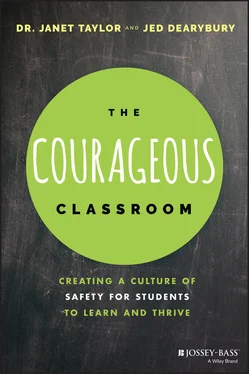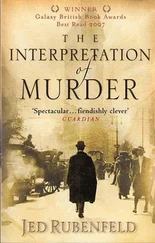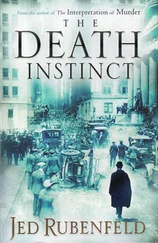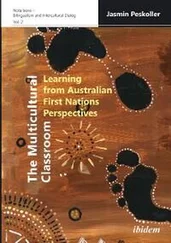Our mind is fear-based because our primitive, lizard brain wants to control our reality and keep us safe. When we are faced with a situation that makes us confused, on guard or afraid, our lizard brain takes over. Although fear itself is not an emotion, it can push us into a river of feelings. However, we have the power to control fear and use our physical and mental response to a fearful situation to our advantage by engaging our wizard brain, which is responsible for executive functioning, in other words, “thinking about thinking.”
When we are traumatized or have a terror event, our brain combines all of our sensory material, thoughts, feelings, beliefs, and creates a semantic memory (events and facts). Semantic memory imprints on the brain like indelible ink; it never goes away. Since we can't erase a semantic memory, we can use our courage to face our fears and create a new more powerful memory that incorporates our purpose, strength, resilience, and healthy coping skills to overcome events that happen in our life.
Keanon Lowe did just that.
On a crisp, but gray spring day in Northeast Portland, ex-pro football star Keanon Lowe calmly drove his dented red Cherokee to work at Parkrose High School not too far from his modest home. As he bit into his apple and gulped his coffee his mind undoubtedly was on his part-time job as the school security guard, but also, on his double-coaching duties as the head coach of the football and track teams. Keanon had two jobs at Parkrose. Neither were easy nor left him financially comfortable, but he chose to be there because, for him, being a positive role model for teenagers was invaluable.
Parkrose High is not unlike other city schools across the nation. Almost three-quarters of the diverse student body at Parkrose qualify for a free lunch because of their families' financial status. The grim brick on the outside in no way reflects the emotions and relationships – positive and negative – swirling inside. Keanon came to the school to make a difference after losing a childhood buddy to a devastating drug overdose. He brought to the job his life experience and knowledge of sport and competition. Lowe says of the school, “I've always known that Parkrose, they didn't win at anything … it's a small forgotten school.” He continues, “That's what attracted me to the place” (Bishop 2019).
Growing up a stone's throw away from Parkrose in a suburb eight miles away, Lowe was raised by a single mother. Taking responsibility for his siblings at a young age, he had a great ethic and set an example for others. As a college star at the University of Oregon he played fearlessly, undersized but very determined on special teams, both defensive and offensive, a testament to his skill. His teammates and coaches describe him as unselfish but tough, as well-known as much as a leader as he was a player. Keanon Lowe was a first-year coach at Parkrose when he got a call to escort a depressed student from another building to the guidance officer. Leaving his cramped office that he shared with another security guard, he willingly complied.
Walking on the concrete walkway bordered by sparse grass, he joked with students as he passed them. The sun had come out in full force and felt good. As he reached the classroom where the students were learning about government, he heard screams bounce off the cement hallway walls. The shrill screams were soon replaced by the sounds of a human stampede of panicked students rushing out of their class because one of their classmates had a weapon, a shotgun partly sticking out from under his black trench coat.
That student was the same one that Keanon Lowe had been tasked to get. Awkwardly face to face, the black metal of the long gun served as a blistering ruler; the distance between them measured by the shotgun squarely placed in the upset student's trembling hands. Looking directly into the teenager's eyes, Lowe saw confusion, anger, desperation, and tears. As the distressed young man suddenly lifted the shotgun to turn it on himself, the remaining students ran for their lives.
Lowe could have too.
He did not.
Keanon Lowe made the decision to grab the shotgun from the young man. At the time, Lowe was unaware that the student, upset over a failed romantic relationship, had recently been diagnosed with depression. They wrestled around the classroom, clanging on blackboards, and ended up in the hallway banging against the metal lockers. Miraculously, Lowe was able to grab the shotgun while keeping the young man in a strong grip. Lowe breathlessly tossed the shotgun to another teacher while screaming at him to call 911.
Putting the young man on the floor while waiting for the police to come, the student was agitated and upset, tearfully shouting, “Nobody cares about me!”
Keanon Lowe did the unthinkable.
He looked into his eyes and said, “I care about you.” Lowe continued saying, “I do bro, That's why I'm here, I got you buddy.” As the police swarmed in and took the student into custody, Lowe was spared. The student was arrested and later released to a hospital for mental health treatment.
Fear. Keanon Lowe used courage and caring to transform his fear into the energy of compassion.
Fear and Trauma Affect Learning
According to the Trauma and Learning Policy Initiative (TLPI), a collaboration of Massachusetts Advocates for Children and Harvard Law School,
trauma resulting from overwhelming experiences has the power to disturb a student's development of foundations for learning. It can undermine the development of language and communication skills, thwart the establishment of a coherent sense of self, compromise the ability to attend to classroom tasks and instructions, interfere with the ability to organize and remember new information, and hinder the grasping of cause-and-effect relationships – all of which are necessary to process information effectively. Trauma can also interfere with the capacity for creative play, which is one of the ways children learn how to cope with the problems of everyday life.
Not only is academic performance hindered, but classroom behavior and peer to peer relationships are negatively impacted as well.
The trauma of childhood abuse can have long-term effects that continue to shape your sense of self and the world around you in adulthood. Often, one of the most tragic consequences of such trauma is its impact on your interpersonal relationships; by disrupting healthy development in your formative years, childhood abuse can deeply compromise your ability to form and maintain the healthy bonds that nurture us throughout our lives.
Childhood trauma is a dangerous or frightening event that a child between the ages of infancy and 18 years of age experiences personally or witnesses. Three hours in a hallway with a textbook over your head while not knowing if a tornado is going to destroy your school at any given moment, possibly injuring you or taking your life is most certainly a traumatic event for anyone, especially a child who is away from their parents as it all happens. It makes me wish that districts had just cancelled schools that day.
In the 1950s during the early stages of the Cold War, when the threat of nuclear bombs in the United States had its citizens in a panic, across the country school children would scurry under desks for duck-and-cover drills just like the tornado safety procedure mentioned above. Years later, surveys of children from this revealed that almost 60% of them still had nightmares about atomic bombs (Pinkser 2019). During the 1980s and 1990s reports of children being kidnapped dominated the airways and with US parents and their children frequently watching television, a 1987 poll found that the most common fear of children was to be kidnapped (Allen 1998). Paula Fass, a historian at UC Berkeley wrote a book about child abductions, Kidnapped . She commented that for most kids, “It didn't seem that there were any protected places” (Pinkser 2019). In reality, the fear of kidnapping by a stranger in 1987 was low, because then like now, on average fewer than 350 people under the age of 21 have been abducted in the United States since 2010, according to the FBI (Reuters Staff 2019).
Читать дальше












